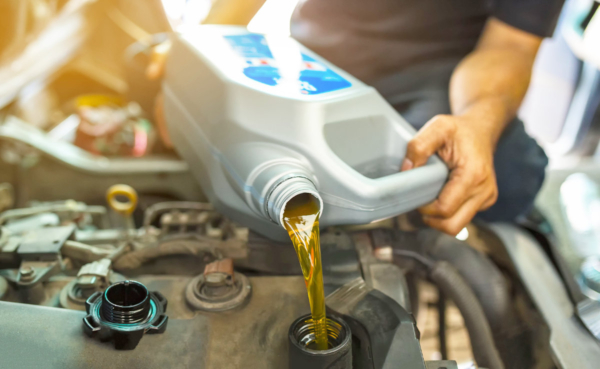PRODUCT LABELS
LABEL BY TYPE

Motor Oil Labels
The automotive industry makes use of a total of six different types of fluids and motor oils, the most important of which are engine oil, transmission fluid, braking fluid, coolant, and power steering fluid. Windshield washer fluid is also an important component. Each type of fluid is required to have a label that specifies the type, the vehicles that are compatible with it, the instructions for usage, the safety considerations, and the legalities, including the appropriate procedures for disposal.
When it comes to automobiles, the make, model, and year of the vehicle all play a role in determining the specific kinds of oils and fluids that are necessary for its operation. Because using the incorrect kind of oil or fluid in a car can cause harm to the engine as well as other components, it is critical that the packaging provides detailed instructions that can be followed without a problem in order to guarantee that the proper product is selected.
The Importance of Clear and Readable Labelling for Automotive Fluids
The label's resistance to wear and tear, as well as its legibility, may be affected by environmental elements such as heat, humidity, and chemical contact.
It is essential to select the appropriate label material and adhesive for the particular application in order to guarantee that the label will continue to be readable and will not become damaged throughout the course of the product's lifespan.
API and ACEA Ratings
It is crucial to include the API (American petroleum institute) and ACEA (Association des Constructeurs Européens d'Automobiles) ratings on the label because they are used around the world to categorise oils based on their performance and viscosity grade. CS Labels is able to provide assistance in selecting the most appropriate label for a given application. This assistance includes ensuring that the label complies with all applicable industry rules, is legal, and is clear and easy to read.
Ratings given by the API and ACEA cannot be interchanged with one another because they are each utilised in different regions of the world. The API ratings are the ones that are utilised most frequently in North America, whereas the ACEA ratings are the ones that are utilised in the UK and Europe. As a result, it is essential to ensure that the label contains the appropriate rating in accordance with the demographics of the intended audience.
While developing motor and engine oil labels in addition to the API ratings and the ACEA ratings, there are a number of other industry standards and regulations that need to be adhered to. In Europe, for instance, the label is required to provide information about the engine oil's fuel economy as well as its performance in regard to the environment. It is essential to maintain a level of familiarity with the most recent revisions to these regulations in order to guarantee that the label complies with all of the necessary standards.
The Impact of High-Quality Labelling
It is possible that the product may be readable for a longer period of time if high-quality printing and accurate labelling are used. This can help reduce the likelihood that the product will be thrown away improperly or used in an inappropriate manner.
On the other hand, incorrect labelling can lead to unintended consequences such as abuse, the introduction of the incorrect oil or fluid into the vehicle, human harm, and damage to the engine or other sections of the vehicle.
The type of oil, its viscosity, and its performance rating are all denoted by the letters and numbers that are printed on oil labels. It is critical to have a solid understanding of these indications in order to guarantee that the appropriate motor oil is used for the particular make and model of the vehicle as well as the engine.
Putting this information on the label can help limit the possibility of the product being used incorrectly, which in turn can assist prevent potential harm to the vehicle.

Consequences of Poor Labelling for Motor Oil
If you don't use the right kind of oil in your engine, you could end up hurting its performance, lowering its efficiency, or even causing it to break down completely. It is essential to include guidelines that are both clear and concise on the label in order to guarantee that the appropriate kind of oil is utilised for the particular make and model of the car as well as the engine.
The Environmental Agency (EA) and other nations have regulatory bodies that oversee the proper disposal of old oil and fluids. In other countries, these regulatory bodies are called something quite similar. It is essential to include appropriate disposal instructions on the label in order to guarantee that the product will be disposed of in a manner that is both responsible and secure.
We are aware that having an appealing label has the potential to grab the attention of the end user; nonetheless, it is critical to make certain that the label complies with all applicable laws and is simple to read.
How Can We Help You Acheive Your Motor Oil Label Goals?
Looking for custom labels for your vehicle's oils and fluids? Look no further than CS Labels!
Our digitally printed solutions are tailored to your needs and include clear instructions for usage and safety considerations. Plus, we use vinyl coatings to prevent smudging and ensure the label is appropriate for the conditions.
Contact us today and discover the label that is best suited for your application to protect both you and the environment.
